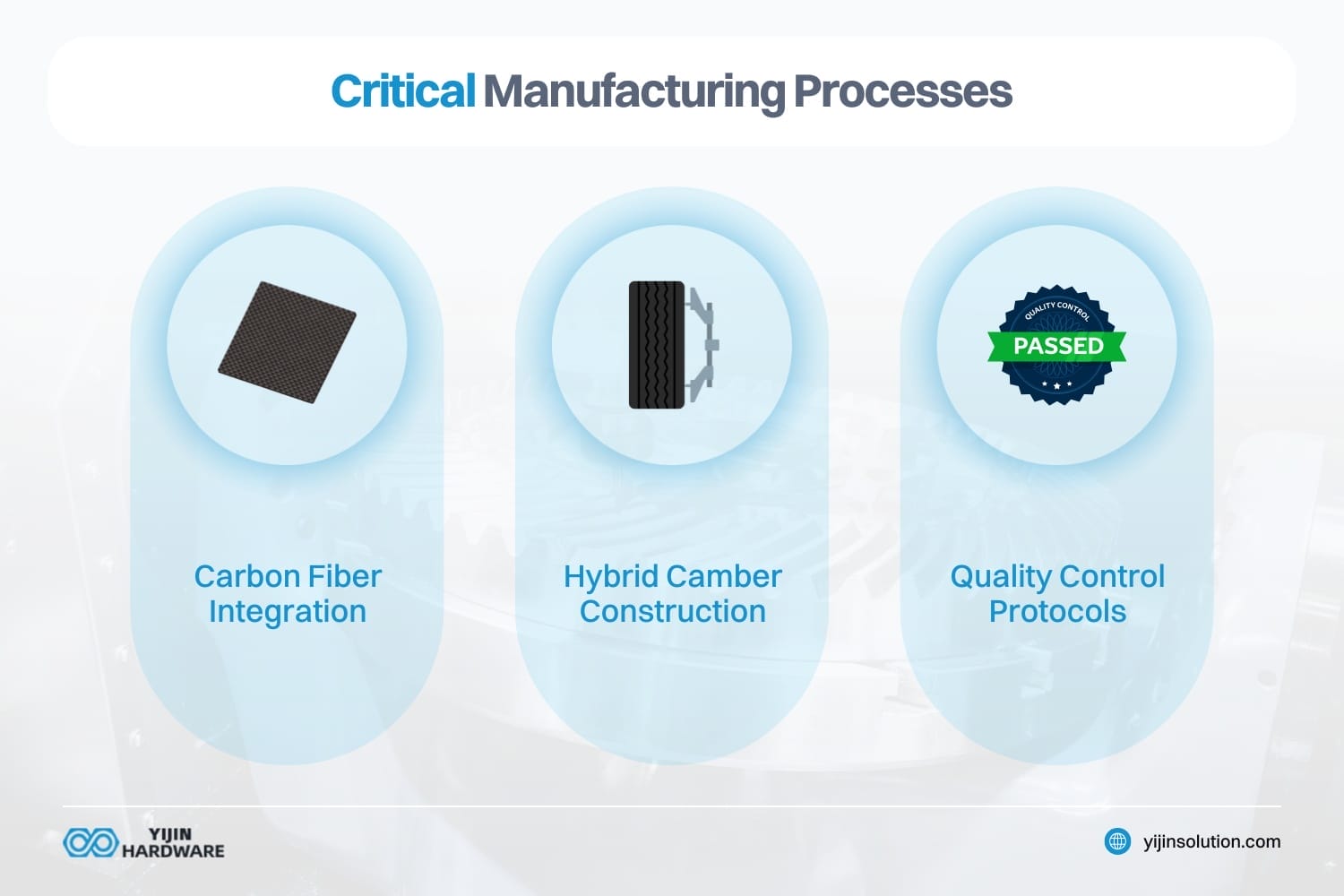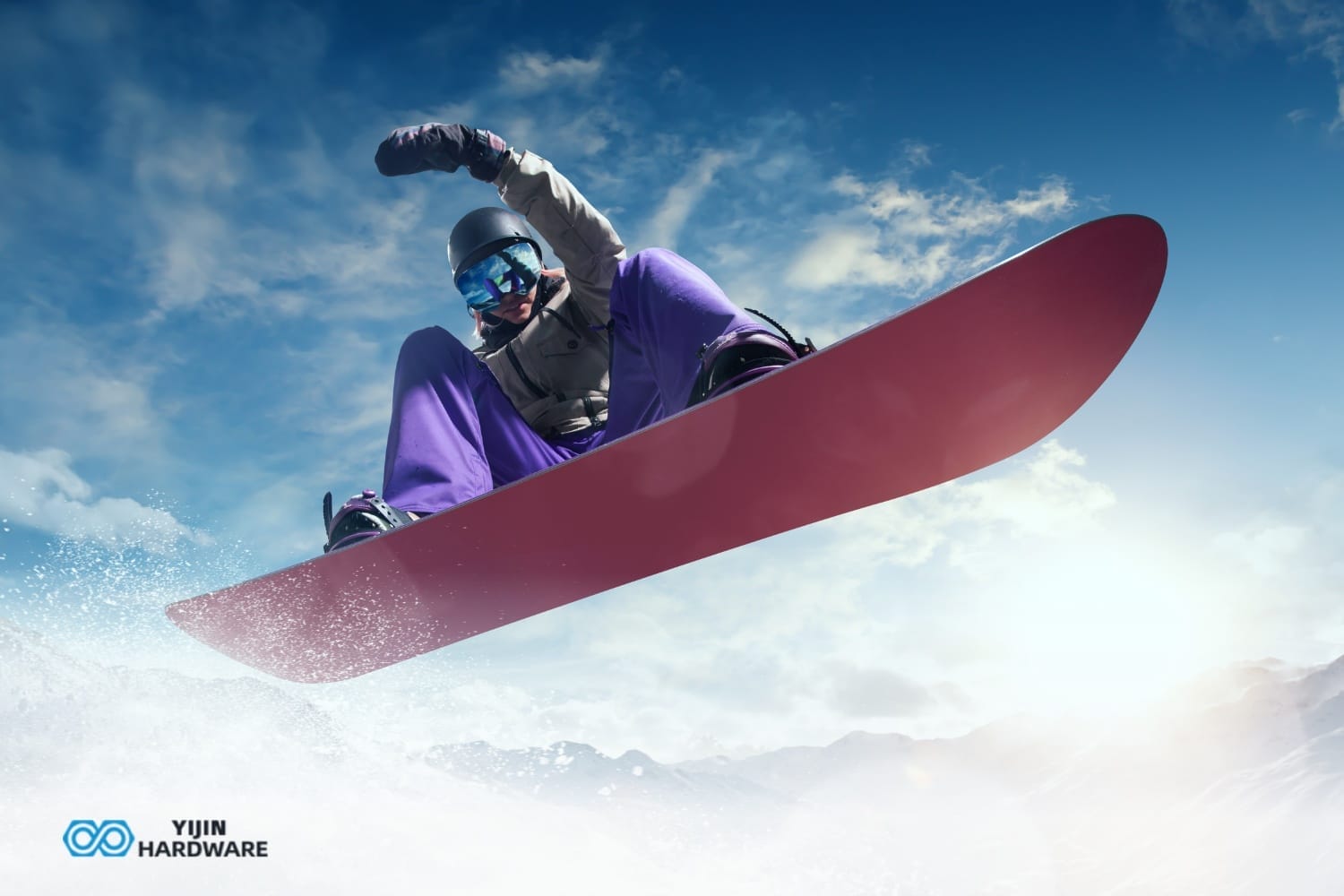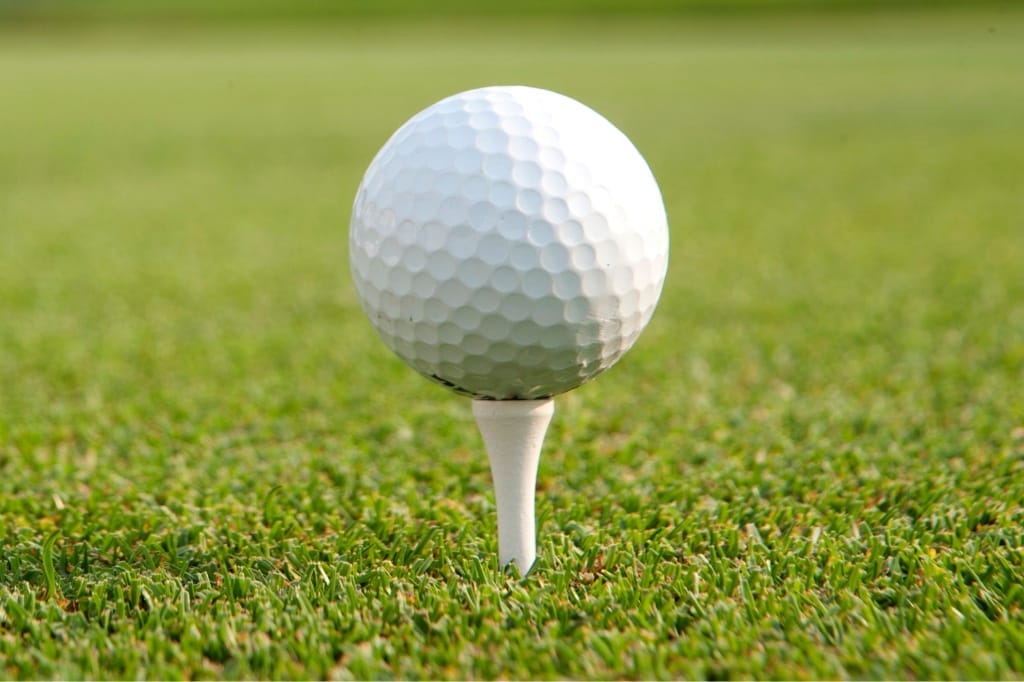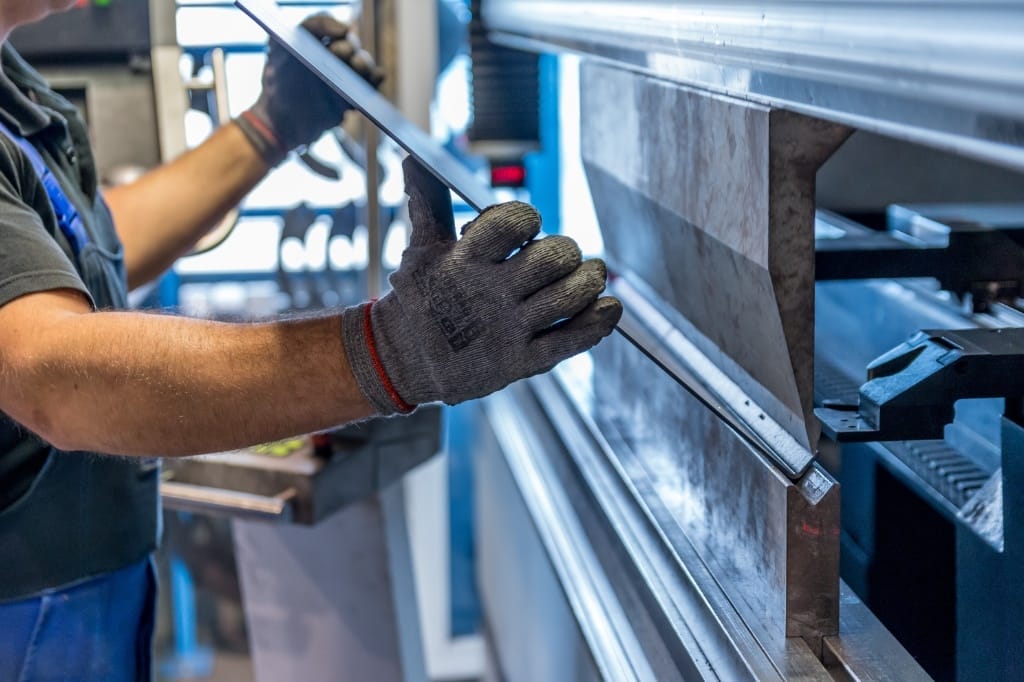When you’re shopping for snowboards, the brand matters more than you might think. Top snowboard manufacturers invest heavily in precise machinery and testing protocols to bring you the best product on the market.
Since the best snowboard companies don’t cut cash on materials or quality controlm you’ll notice the difference immediately when riding boards from premium snowboard manufacturers. That’s why consulting the CNC machining services of a company like Yijin Hardware offers better construction for your snowboard. Build strong so that your gear performs for seasons to come.
Key Takeaways
- The best snowboard manufacturers stand out by investing in precision CNC machining, advanced materials, and strict quality control to deliver high-performance, durable boards.
- Brands like Burton, CAPiTA, and Lib Tech innovate through proprietary technologies such as Magne-Traction edges and hybrid camber profiles to enhance rider experience across conditions.
- Premium manufacturers maintain tight tolerances, eco-conscious production, and individualized board testing—factors that clearly separate them from budget brands.
Top 10 Best Snowboard Manufacturers

The snowboard industry features several standout companies known for exceptional quality and innovation. We’ve ranked these manufacturers based on their technical capabilities and market reputation.
1. Yijin Hardware
Yijin Hardware leads in precise CNC machine work for snowboard parts. We make exact binding holes, edge channels, and custom hardware. Our machines work within tighter limits to match and excel above industry standards. Yijin Hardware’s CNC centers make binding hardware, mounting systems, and special parts for top snowboard manufacturers worldwide.
Machine Work Skills
Yijin Hardware uses multi-axis CNC centers for complicated binding parts. Our company works with 6061-T6 aluminum to make light, strong parts. Surface finishing gives parts protective coating with a smooth 0.8μm finish. Quality checks make sure every part meets size and performance needs.
Our snowboard factory uses efficient production with environmentally responsible practices. Technical teams work with brands to improve part designs for better performance. This team approach creates new solutions for binding systems, edge work, and structural hardware that make some of the best components available.
| Manufacturing Specification | Tolerance | Application | Material |
|---|---|---|---|
| Binding Insert Threading | ±0.05 mm | M6 x 1.0 Systems | Steel/Aluminum |
| Edge Channel Machining | ±0.02 mm | 2.5 mm Steel Edges | Hardened Steel |
| Hardware Components | ±0.08 mm | Custom Binding Parts | 6061-T6 Aluminum |
2. Burton
Burton changed snowboarding with the Channel mounting system. This uses precise aluminum tracks for unlimited binding positioning. The Vermont facility mixes old craftsmanship with new automation to make consistent Burton boards. Burton’s pressing methods and core building set industry standards for strength and performance in all-mountain and freestyle applications.
Channel System Details
The Channel system needs exact machine work for proper binding fit. Computer-controlled cutting prevents weak spots during hard riding. The system allows riders to adjust their stance perfectly for their style and preferences.
3. Never Summer
Never Summer makes all snowboards in Denver, Colorado using special hybrid camber technology and premium core materials. The company’s American manufacturing ensures direct quality control over every step. Each board gets individual flex testing and visual inspection before packaging, making quality boards that last.
- Rocker-camber shapes need precise cutting equipment for consistent flex
- Carbon fiber strips require special bonding methods and controlled heating
- Limited production allows attention to detail that many other brands cannot maintain
4. CAPiTA
CAPiTA snowboards come from the Mothership facility in Austria, running on 100% renewable energy while making technically advanced boards. Automated pressing systems ensure consistent material spread and temperature control throughout heating processes. The Defenders of Awesome model shows hybrid camber building methods that balance freestyle performance with all-mountain versatility.
| Technology | Application | Benefit |
|---|---|---|
| Thermopolymer Starship Core | Lightweight Construction | Superior Strength-to-Weight |
| Pure Megacarbon | Strategic Reinforcement | Enhanced Torsional Stiffness |
| Clean Energy Manufacturing | 100% Renewable Power | Zero Carbon Emissions |
5. Lib Tech
Lib Tech’s Magne-Traction edge technology needs special manufacturing to create wavy edge patterns that improve grip on hard surfaces. The Banana Technology rocker shapes require precise core cutting and bonding methods. Boards are made at Mervin Manufacturing in Washington using eco-conscious processes that produce snowboards with minimal environmental impact.
Magne-Traction Building Process
The wavy edge cutting needs special computer programming for consistent patterns. Seven contact points per edge increase grip surface area on hard snow conditions. Basalt fiber adds vibration control while keeping a natural flex feel.
6. Jones
Jones snowboards focuses on splitboard and freeride building with emphasis on strength in backcountry conditions. The 3D Contour Base technology needs advanced manufacturing to create subtle surface changes that improve float and turn start. Boards use recycled steel edges and bio-based materials for big mountain performance.
- Precise splitting parts ensure reliable field assembly for any splitboarder
- Strong touring brackets handle extra stress from climbing hardware
- Quality control standards meet demanding backcountry performance needs
7. Arbor
Arbor snowboards started using sustainably sourced wood veneers as working topsheet materials. This needs special pressing methods to bond wood to traditional snowboard building. The company’s environmental commitment drives innovation in bio-based materials and renewable manufacturing processes. Building methods emphasize natural materials while maintaining performance standards across different riding style preferences.
Sustainable Material Use
FSC-certified wood cores have specific grain directions and moisture levels. Bio-based materials reduce environmental impact without losing strength. Grip Tech edge design gives better control through precise steel placement.
8. GNU
GNU’s uneven board designs need advanced manufacturing to create different turn radii for heel and toe edges. The Riders Choice model shows uneven building that requires precise measurement and shaping to ensure proper balance. Boards share Magne-Traction technology with Lib Tech through Mervin manufacturing facilities.
| Asymmetrical Feature | Heel Edge | Toe Edge | Performance Benefit |
|---|---|---|---|
| Sidecut Radius | Deeper | Shallower | Natural Turn Balance |
| Edge Contact | Extended | Reduced | Improved Control |
| Flex Pattern | Softer | Stiffer | Anatomical Response |
9. Bataleon
Bataleon’s Triple Base Technology creates 3D base shapes that need special manufacturing equipment and precise control systems. SideKick technology lifts edges at contact points, requiring exact positioning during pressing. The 3BT manufacturing uses multiple pressing stages and precise temperature control to create a great snowboard that performs across varied terrain.
- Computer-controlled pressing systems maintain exact base shape
- Carbon fiber strips need special application methods during building
- Quality programs test design improvements through extensive testing
10. Salomon
Salomon’s advanced engineering makes boards with sophisticated dampening systems and precision building details. Ghost Basalt stringers need special application methods for optimal vibration control and responsiveness. Clean, functional designs emphasize performance over visual complexity, making this ski and snowboard brand a top choice for mountain riding enthusiasts.
Advanced Dampening Technology
Damplifier systems need precise positioning during building for vibration control. Computer-controlled manufacturing ensures consistent quality across board models. Global manufacturing network provides access to advanced materials and production capabilities.
What Manufacturing Technologies Provide the Greatest Performance Benefits?
CNC machining technology provides the greatest performance benefits through precise control of binding interface systems, edge placement, and core profiling accuracy. Computer-controlled cutting and drilling ensure binding inserts are positioned with exact tolerances, eliminating stress concentrations that cause premature failure. Advanced machining enables complex geometries in core construction that optimize flex patterns and weight distribution for any snowboarder.
Critical Manufacturing Processes

- Carbon fiber integration techniques enhance board performance through strategic reinforcement placement
- Hybrid camber construction methods combine traditional camber and rocker benefits through precise shaping
- Quality control protocols at premium facilities include individual board testing for flex and compatibility
Carbon fiber application determines how effectively materials improve torsional stiffness while maintaining desired flex characteristics. Manufacturing precision in fiber orientation and resin distribution ensures maximum strength benefits without unnecessary weight increases. Proper curing protocols prevent delamination and maintain performance throughout the board’s service life, regardless of the type of board or intended use.
What Quality Standards Separate Premium Manufacturers from Budget Brands?
Premium manufacturers maintain tolerance specifications within ±0.1 mm for critical dimensions while budget brands often accept ±0.5 mm or greater variations. Quality control protocols at premium facilities include individual board testing for flex characteristics, edge sharpness, and binding compatibility. Advanced manufacturers utilize automated inspection systems combined with skilled technician evaluation to ensure best boards reach consumers.
Material selection standards differ significantly between premium and budget manufacturers in core wood grades, fiberglass specifications, and resin quality. Premium brands source FSC-certified wood cores with specific grain orientations and moisture content requirements. Higher-grade materials demand more sophisticated manufacturing processes but deliver superior performance and durability that any serious rider demands.
Testing protocols at premium facilities include destructive testing programs that validate design improvements and manufacturing consistency. The snowboard industry leaders invest heavily in R&D to maintain competitive advantages. Budget manufacturers typically rely on statistical sampling rather than comprehensive testing programs. Investment in quality assurance systems reflects each manufacturer’s commitment to long-term product performance.
Additional Notable Manufacturers
Several other companies deserve recognition for their contributions to snowboard gear innovation. K2 snowboards bring ski industry expertise to snowboard design. Nitro continues developing rider-focused products with strong team rider input. Nidecker combines traditional craftsmanship with modern technology. While many brands moved their manufacturing overseas, these companies maintain quality standards through careful factory selection and quality control.
The number of brands producing high-quality equipment continues growing as technology advances. Some brands are still committed to eco-friendly practices while others focus purely on performance. Understanding what separates top-tier manufacturers helps riders choose equipment that matches their needs and supports companies aligned with their values.
As of 2023, the snowboards market size is around USD 1.5 billion. Data Intelo believes that it is likely going to grow to USD 2.4 billion by 2032. So, this is a fairly big market to consider!
Yijin Hardware: Top Snowboard Manufacturer
The best snowboard brands continue evolving through precision engineering, advanced materials, and innovative production techniques. Leading manufacturers invest heavily in CNC machining capabilities, quality control systems, and sustainable practices that separate premium products from mass-market alternatives. Understanding these technical differences helps riders make informed decisions about snowboard equipment that will perform reliably across diverse conditions.
For manufacturers seeking to elevate their production capabilities, partner with us to get access to the tolerances and quality standards that define industry leaders. The technical expertise and manufacturing precision demonstrated by Yijin Hardware can improve any product requiring similar attention to detail and performance standards.
Best Snowboard Manufacturers FAQs
How do Binding Insert Tolerances Affect Snowboard Performance?
Binding insert tolerances directly impact load distribution and prevent stress concentrations that cause premature failure under aggressive riding conditions. Precision CNC machining maintains insert positioning within ±0.05 mm tolerances, ensuring proper binding interface and optimal power transfer. Loose tolerances create uneven loading that reduces board lifespan and compromises performance during high-stress maneuvers like freestyle tricks or pow riding.
What Role Does Core Construction Play in Manufacturing Costs?
Core construction represents approximately 30-40% of total manufacturing costs for premium snowboards due to material selection, precision cutting, and specialized shaping requirements. Paulownia cores command higher prices than poplar alternatives but provide superior strength-to-weight ratios and responsiveness that serious snowboarders demand. Advanced core construction methods require computer-controlled cutting systems and skilled technicians, representing substantial capital investments that separate premium from budget manufacturers.
How do Environmental Regulations Impact Snowboard Manufacturing?
Environmental regulations significantly influence manufacturing processes through restrictions on volatile organic compounds, waste disposal requirements, and energy consumption standards. Compliance drives innovation in bio-based resins, renewable energy adoption, and waste reduction programs while increasing initial manufacturing costs. Modern facilities must invest in air filtration systems, waste treatment equipment, and renewable energy sources to meet compliance standards while maintaining the quality and performance standards that define the best snowboard brands.
Back to Top: Top 10 Best Snowboard Manufacturers 2025 | Industry Leaders









